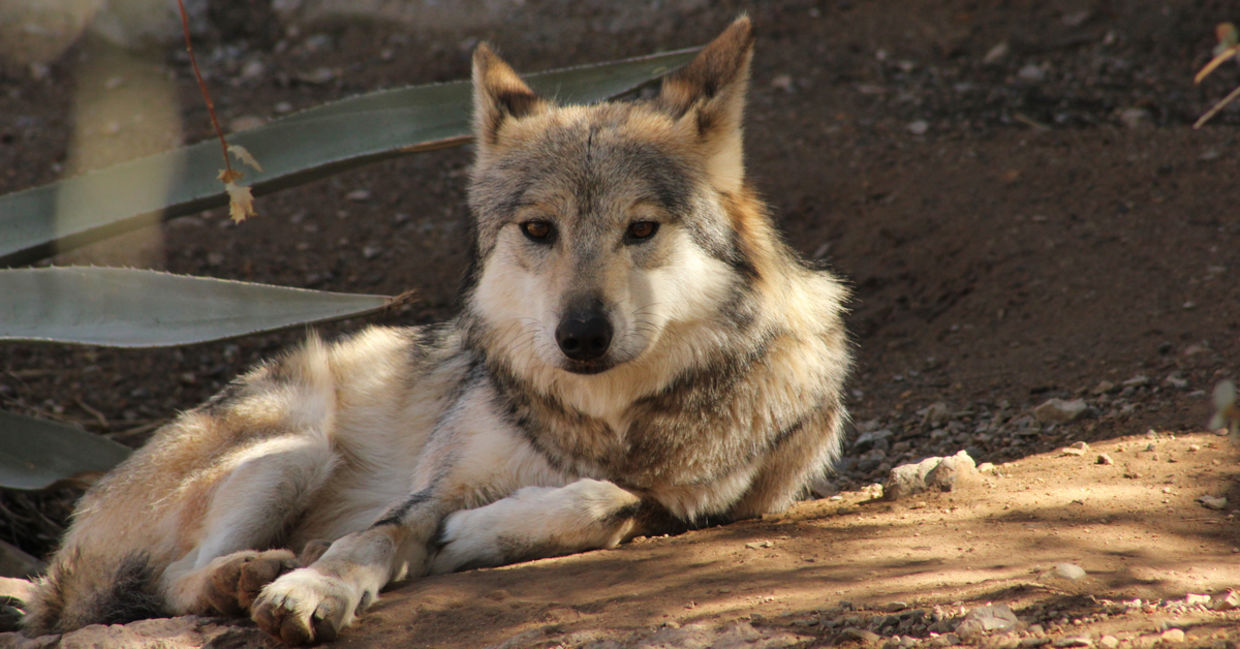
(mpete714 / Shutterstock.com)
Conservation in the United States goes back to the 19th century with the formation of the first national park. The movement began with hunters, like former president Theodore Roosevelt, and John Muir who was the force behind preserving the Sierra Nevada. They had the vision to see that wasting resources and wildlife was leading to the extinction of species.
Preserving wild animals like elk or deer or even bears has been popular for a long time. But predator animals like wolves were thought of as threats to the safety of people and the prosperity of farmers and they were purposely driven to extinction. It took a former wolf trapper and hunter, Roy T. McBride, to bring the Mexican Wolf – commonly called el lobo – back from the brink and the wolves have just been removed from the extinct species list.
These wolves, a smaller subspecies of the gray wolf was once native to Arizona, New Mexico, Texas and northern Mexico. On December 8, 1970, the last e Mexican wolf were killed in Texas. Only a small population remained in northern Mexico and the species survival was very much in doubt.
It's larger cousin, the North American gray wolf fared better because the species was able to move north to Canada.
In the 1970s, the Mexican wolf's story got much brighter when the United States Fish and Wildlife Service hired McBride to conduct a survey of the wolves in Mexico according to Mexican News Daily. This survey quickly morphed into a trapping mission with the goal of starting a captive breeding program to try to save this critically endangered species.
By 1980, McBride had captured five wolves and three of them became the foundation for what would come to be known as the McBride lineage of Mexican wolves. Mexican News Daily said that by 1995, almost 100 McBride wolves were born in the US. Later additions included eight wolf pups born in captivity in the Chapultepec Zoo in Mexico City and 22 pups that were born in other US breeding programs. These wolves were added to increase genetic diversity.
The offspring of this program was returned to the wild in southwestern US in 1998 and later were reintroduced in northern Mexico. The species was greatly aided In 2009, when by presidential decree, the Janos Biosphere Reserve was created in Chihuahua, Mexico.
The reserve consists of sprawling 500,000 hectare (1.25 mil acre) that gives the wolves' room to grow. It was created to reestablish populations of all the large mammals that used to roam freely a century ago.
In 2015, a survey from the US Fish and Wildlife Service found 109 Mexican wolves in Arizona and New Mexico. An additional 240 remained in the breeding program.
“In 1982, the Mexican wolf recovery team recommended a population of at least 100 animals in the wild as a hedge against extinction; until we initiated the first releases in 1998, there had been no Mexican wolves in the wild in the United States since the 1970s,” said Southwest regional director Benjamin Tuggle in the survey. “Although there is still much to be done, reaching this milestone is monumental!”
Removing the Mexican wolf from the extinct species list (even though it is still endangered) is a major milestone for the conservationists who cooperated and worked together across borders to save these animals. It shows that neighbors working together instead of building walls, can do anything.
YOU MIGHT ALSO LIKE:
Thanks to Native Americans, Wild Bison Are Roaming the Prairie Again
5 Incredible Animals Saved from Extinction
Canada Creates Conservation Area to Protect Arctic Lands and Waters







